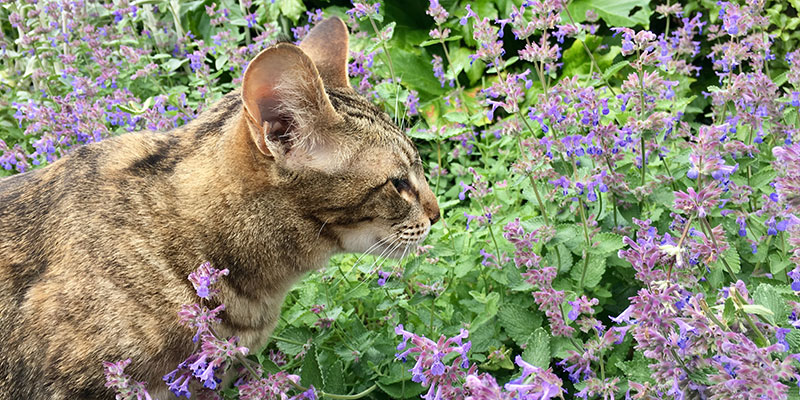
The origins of nepetalactone biosynthesis in catnip
Context
We investigate how plants evolve to make new chemicals. To do this we focus on catmint also known as catnip or Nepeta. Catmint is famous for its euphoric effects on cats, which is the result of a chemical produced by catmint called nepetalactone. Catmint is part of the mint family, which includes plants such as lavender, oregano and, of course, mint. However, catmint has evolved uniquely among the mints to make nepetalactone.
The research
We are using catnip as a model to investigate how plants evolve to make new chemistry: How did a mint become a catmint? This work is carried out in collaboration with Prof Sarah O’Connor at the Max Planck Institute of Chemical Ecology and the Mint Evolutionary Genomics Consortium. We previously discovered unusual “cyclase” enzymes in catnip that enable the plant to produce nepetalactone. We then sequenced the genome of catnip and with this information, we were able to determine how a key enzyme responsible for nepetalactone formation evolved. In the future, we aim to understand the evolution of Nepeta further by investigating its close relatives.
Project activities and publications
Contact us
Centre for Novel Agricultural Products
cnap@york.ac.uk
+44 (0)1904 328776
Department of Biology,
University of York,
Wentworth Way,
York
YO10 5DD
Featured researcher

Benjamin Lichman
Dr Lichman is interested in the mechanism and evolution of plant biosynthetic enzymes, and the origin of metabolic pathways.
Contact us
Centre for Novel Agricultural Products
cnap@york.ac.uk
+44 (0)1904 328776
Department of Biology,
University of York,
Wentworth Way,
York
YO10 5DD